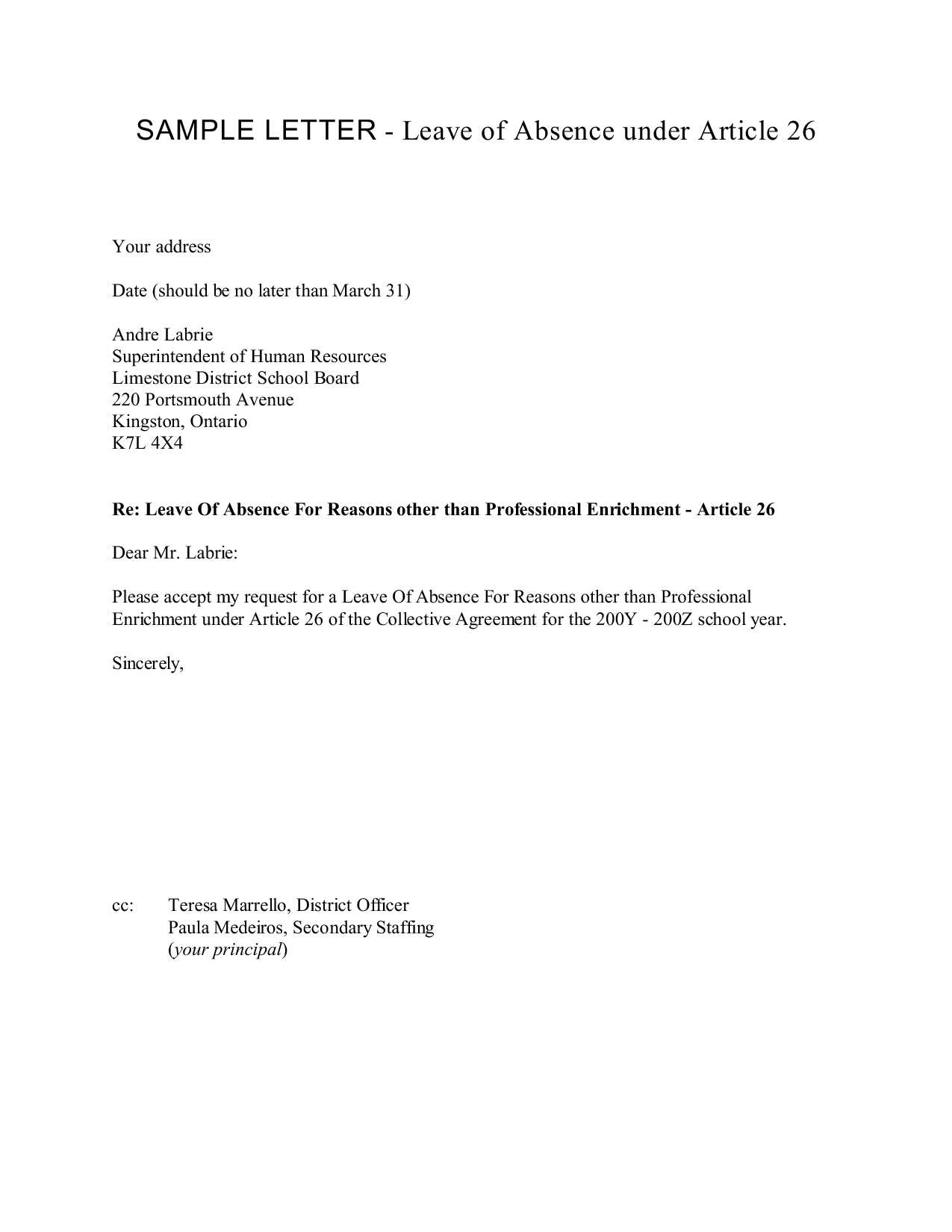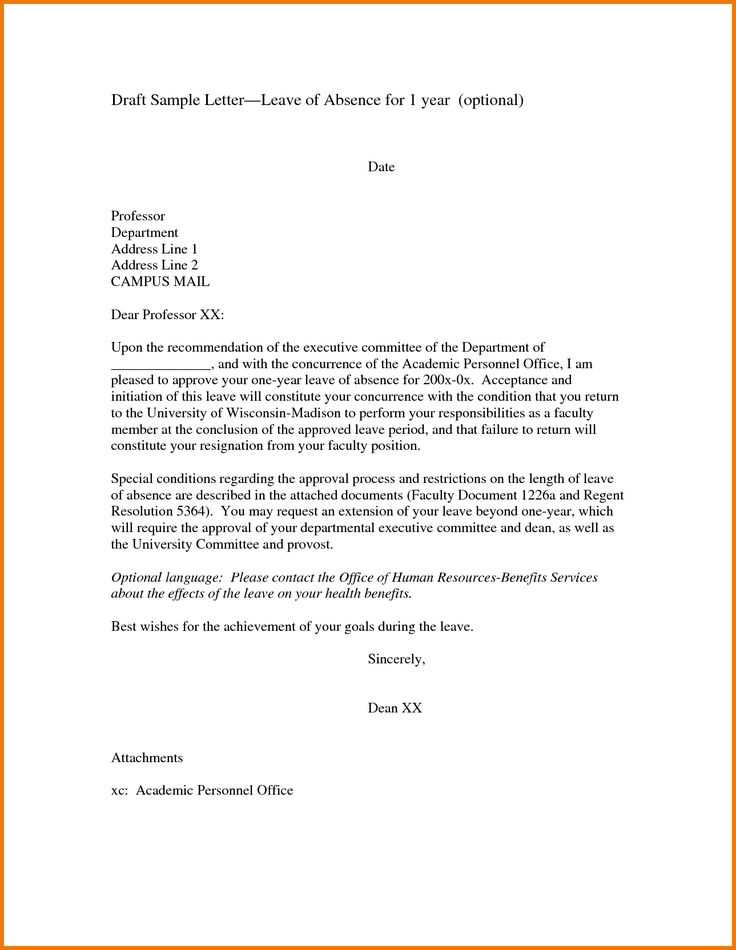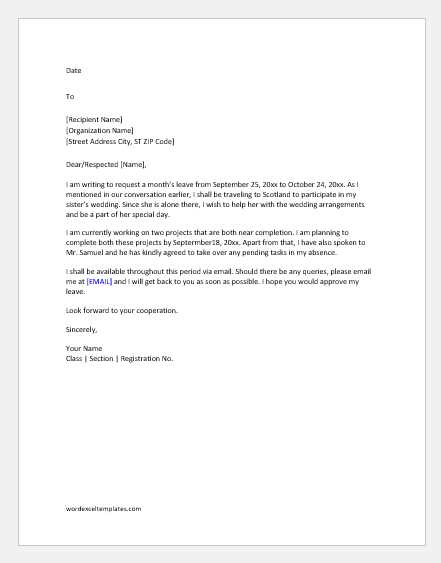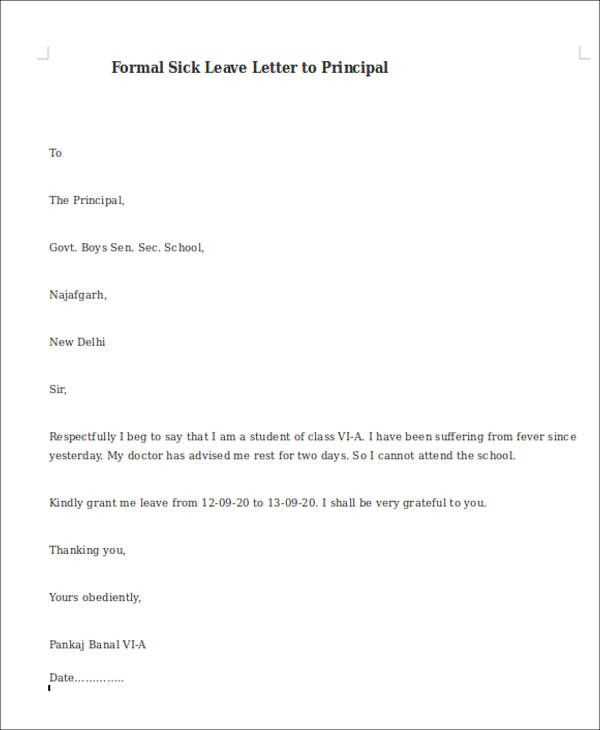Leave Letter Template for Office

When employees need to take a break from their daily responsibilities, whether due to personal or health reasons, it is important to communicate the request clearly and professionally. Crafting a proper message is essential to ensure smooth communication and approval from management.
Important Information to Include
In order to ensure the message is clear and concise, there are a few key elements to consider when drafting your request:
- Reason for Absence: Briefly explain why you need time away. It’s enough to provide a general description without going into too much detail.
- Dates of Absence: Clearly mention the start and end dates, so the recipient understands the duration of your absence.
- Work Arrangements: If applicable, mention how you plan to handle any ongoing tasks or projects during your absence.
Structure of a Professional Request
Crafting a well-structured communication helps to maintain professionalism. Below is a simple format that you can follow:
- Start by addressing the recipient and mentioning the purpose of your communication.
- Clearly state the dates and reason for your absence.
- If needed, offer details on how you plan to manage your responsibilities during the absence.
- End with a polite closing statement, expressing gratitude for understanding.
Why a Clear Message Matters
Sending a straightforward and respectful message helps foster a positive relationship with your employer. It shows consideration and allows for better planning while you are away. A well-written request also reduces the chances of misunderstandings and ensures your absence is recorded correctly.
How to Write an Effective Absence Request
When you need to step away from your daily responsibilities, it’s crucial to communicate your absence in a clear and professional way. Whether for health or personal reasons, expressing the request appropriately ensures smooth approval and minimal disruption at work. This section covers the essential components of a well-structured request, along with common mistakes to avoid and tips for making the process easier.
Understanding Different Absence Categories
Before drafting your message, it’s important to understand the different types of absences that might require a request. Personal, sick, and emergency absences are among the most common, and each type might require different levels of explanation or documentation. Make sure you choose the right approach based on the situation and your workplace’s policies.
Key Elements of a Request

When composing your absence request, ensure you include the following details:
- Reason: Provide a brief and clear explanation of why you will be absent, without going into unnecessary details.
- Dates: Clearly specify the dates you will be unavailable, including both the start and end dates.
- Impact: Mention any impact on your work, if applicable, and suggest how you plan to handle tasks during your absence.
A concise and structured request ensures that your communication is professional and easily understood.
Common Mistakes to Avoid

When writing a request, be mindful of the following pitfalls:
- Over-explaining or providing too much unnecessary detail.
- Failing to mention dates or leaving the absence duration unclear.
- Not addressing potential work coverage or task delegation.
By avoiding these errors, you can ensure your request remains clear, respectful, and professional.
Tips for Professional Requests

To submit an absence request efficiently, keep the following tips in mind:
- Submit the request as early as possible to allow for adequate planning.
- Be polite and express gratitude for your employer’s understanding.
- Follow up with any necessary documentation, such as a doctor’s note if required.
By following these practices, you ensure your absence is managed smoothly, maintaining a professional image and helping to ensure a positive working relationship.